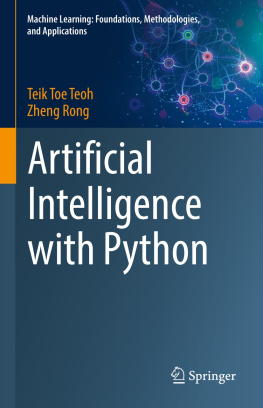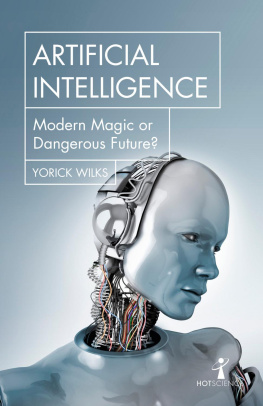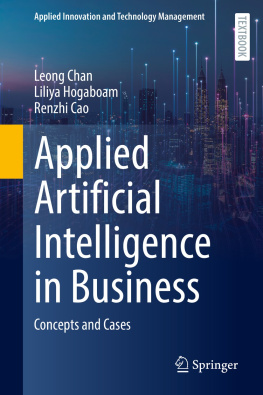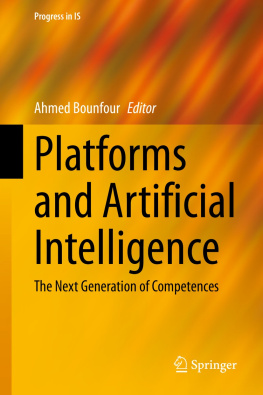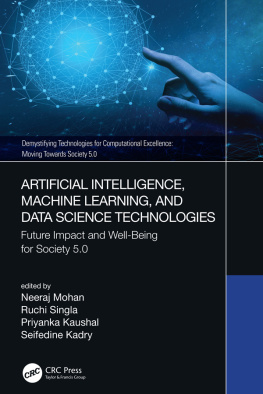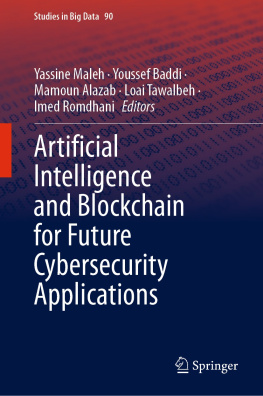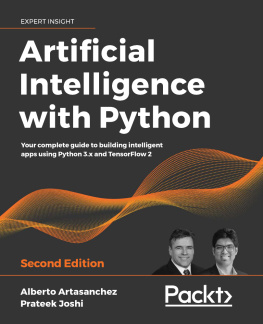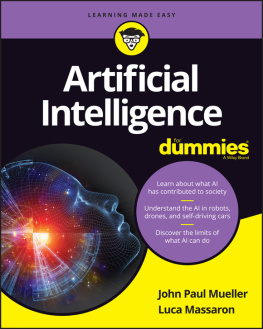Albert Chun-Chen Liu - Understanding Artificial Intelligence: Fundamentals and Applications
Here you can read online Albert Chun-Chen Liu - Understanding Artificial Intelligence: Fundamentals and Applications full text of the book (entire story) in english for free. Download pdf and epub, get meaning, cover and reviews about this ebook. year: 2022, publisher: Wiley-IEEE Press, genre: Home and family. Description of the work, (preface) as well as reviews are available. Best literature library LitArk.com created for fans of good reading and offers a wide selection of genres:
Romance novel
Science fiction
Adventure
Detective
Science
History
Home and family
Prose
Art
Politics
Computer
Non-fiction
Religion
Business
Children
Humor
Choose a favorite category and find really read worthwhile books. Enjoy immersion in the world of imagination, feel the emotions of the characters or learn something new for yourself, make an fascinating discovery.

- Book:Understanding Artificial Intelligence: Fundamentals and Applications
- Author:
- Publisher:Wiley-IEEE Press
- Genre:
- Year:2022
- Rating:3 / 5
- Favourites:Add to favourites
- Your mark:
Understanding Artificial Intelligence: Fundamentals and Applications: summary, description and annotation
We offer to read an annotation, description, summary or preface (depends on what the author of the book "Understanding Artificial Intelligence: Fundamentals and Applications" wrote himself). If you haven't found the necessary information about the book — write in the comments, we will try to find it.
Provides students across majors with a clear and accessible overview of new artificial intelligence technologies and applications
Artificial intelligence (AI) is broadly defined as computers programmed to simulate the cognitive functions of the human mind. In combination with the Neural Network (NN), Big Data (BD), and the Internet of Things (IoT), artificial intelligence has transformed everyday life: self-driving cars, delivery drones, digital assistants, facial recognition devices, autonomous vacuum cleaners, and mobile navigation apps all rely on AI to perform tasks. With the rise of artificial intelligence, the job market of the near future will be radically different???many jobs will disappear, yet new jobs and opportunities will emerge.
Understanding Artificial Intelligence: Fundamentals and Applications covers the fundamental concepts and key technologies of AI while exploring its impact on the future of work. Requiring no previous background in artificial intelligence, this easy-to-understand textbook addresses AI challenges in healthcare, finance, retail, manufacturing, agriculture, government, and smart city development. Each chapter includes simple computer laboratories to teach students how to develop artificial intelligence applications and integrate software and hardware for robotic development. In addition, this text:
- Focuses on artificial intelligence applications in different industries and sectors
- Traces the history of neural networks and explains popular neural network architectures
- Covers AI technologies, such as Machine Vision (MV), Natural Language Processing (NLP), and Unmanned Aerial Vehicles (UAV)
- Describes various artificial intelligence computational platforms, including Google Tensor Processing Unit (TPU) and Kneron Neural Processing Unit (NPU)
- Highlights the development of new artificial intelligence hardware and architectures
Understanding Artificial Intelligence: Fundamentals and Applications is an excellent textbook for undergraduates in business, humanities, the arts, science, healthcare, engineering, and many other disciplines. It is also an invaluable guide for working professionals wanting to learn about the ways AI is changing their particular field.
Albert Chun-Chen Liu: author's other books
Who wrote Understanding Artificial Intelligence: Fundamentals and Applications? Find out the surname, the name of the author of the book and a list of all author's works by series.


